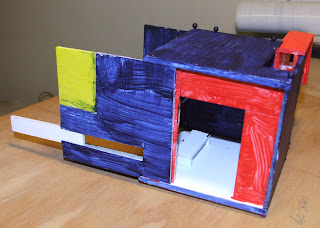Estas fotos tiradas no verão de
1983 ao fim do dia revelam algo que é frequentemente esquecido, o valor
paisagístico do skyline. Se não fosse o acaso de as últimas terem sido tiradas
em contraluz, não me teria apercebido. Os diversos volumes à luz do dia
fragmentam-se, distraem-nos de ver o skyline. Esta é a parte velha de Almada,
no alto de uma colina, as cérceas são mais ou menos semelhantes, o que varia é
a topografia. O núcleo urbano está ancorado no Território, não o antogoniza,
retira sinergias que valorizam o Lugar. A torre sineira elevando-se acima dos
telhados transmite uma paz decorrente da sua simbologia como expressão
espiritual da comunidade. Esta torre já foi de um convento que depois se tornou
no edifício da Câmara Municipal. Em Portugal é normal encontrar nas aldeias e
vilas que não sofreram o assalto especulativo duas torres: a do Poder da Igreja
e a do Poder Laico. Por vezes até, uma terceira, a do Poder do Senhor local.
These photos shot in the summer of 1983, at the
end of the day reveal something often disregarded the landscape value of the
skyline. If it wasn’t the random chance of the last photos were done in the
precise moment the sun just disappeared, I wouldn’t notice the contour of the
roofs. In the daylight the volumes are fragmented and don’t reveal so obviously
the skyline. This the old part of Almada on top of a hill, the height of the buildings
with minimal differences, it is the topography that delineates the overall
contour. The town is anchored to the Territory, it doesn’t antagonize it, just withdraws
synergies that give added value to the Place. The bell tower belonged to a
convent that later on became the Town Hall. It is soothing to watch that tower
as the centre of a community. In Portugal it is a common sight in small
villages that resisted to real estate speculation to see two towers. One from
the church symbolizing the Power of the Catholic Church and the other from the Town
Hall symbolizing the Power of the villagers. In some places there can be found
a third tower (of a castle of palace) symbolizing the Power of the Nobility.
Existe algum debate, embora
frouxo sobre a construção em altura em Lisboa. A última proposta veio pela mão
de um respeitado arquitecto português premiado por todo o Mundo. O seu
argumento foi que ao concentrar numa torre, libertava espaço para uso público.
Pessoalmente foi esta argumentação quem me chocou mais que a torre em si.
Julgava que o longo e exigente treino de um arquitecto se destinava a bem
servir o cliente, mas também a comunidade.
Uma característica muito
interessante do Tejo frente a Lisboa é a diferença de topografia das duas
margens. A margem norte onde Lisboa se implanta eleva-se a cotas altas, mas com
pendentes relativamente suaves. Almada repete o mesmo padrão, mas as suas
“costas”, a margem frente a Lisboa, é uma abrupta arriba que oculta
parcialmente a cidade.
Os lisboetas têm o privilégio de
olhar para um rio lindíssimo e uma margem oposta quase selvagem. Estar dentro
da cidade e poder olhar para o campo serve de escape para o aperto de um ritmo
urbano frenético.
This photo of Lisbon seen from
Almada shows the dome of the Estrela Basilica diluted by the new skyline
defined by the Amoreira Towers behind and some other excrescences that like
pimples on a teen face pop here and there. But Lisbon is a millenary town not a
teen Las Vegas. The Estrela’s dome was the centrepiece of the urban composition
in this area. It gave an hierarchy. Lisbon is a hilly town, when the contemporary layer of buildings (much higher) are built, the understanding of the rolling hills is lost. There’s some debate although mild, about
high rise in Lisbon. The last time the issue erupted was by the hand of a Portuguese
architect with a lot of international awards.
His point was that by building a high rise would free space for public use. It
shocked me more the justification than the project. I though that the long and
demanding studies to become an architect were destined to serve well the client
but also the community.
Diga-se de passagem que o “esplendor”
desvanece-se durante o dia; Almada não passa de um amontoado caótico de prédios
altos. Não são visíveis linhas de força indicativas de avenidas largas ou
coerência formal no desenho dos quarteirões.
If it wasn't for the new tall buildings hardly will
one perceives the existence of Almada when looking from Lisbon. An awesome experience
is to cross the bridge by night, especially on a cloudy one. Only at the middle
of the bridge one notices the glow of the city lights. After reaching the
southern margin and descending to the valley the town reveals itself in its
splendour.
It’s the consequence of the topography, but
surely this emotional, yet subjective element makes part of the formula to
build a townscape.
One has to say that by day the splendour is
gone and what can be seen is a chaotic assembly of tall buildings. No
noticeable lines indicating wide avenues or coherence in the block’s volumes
definitions.


































